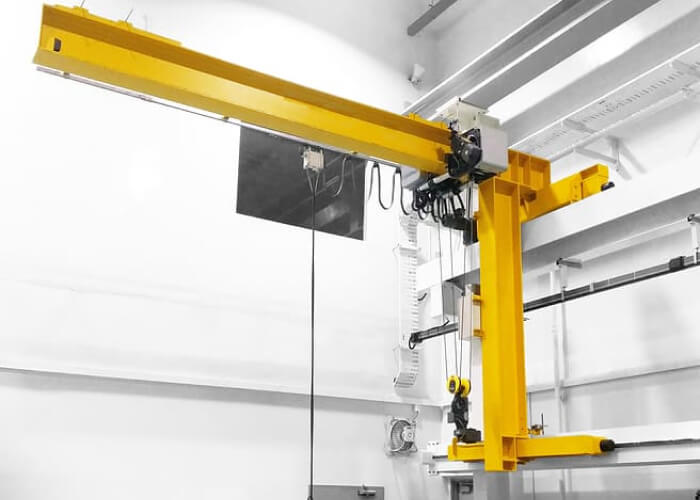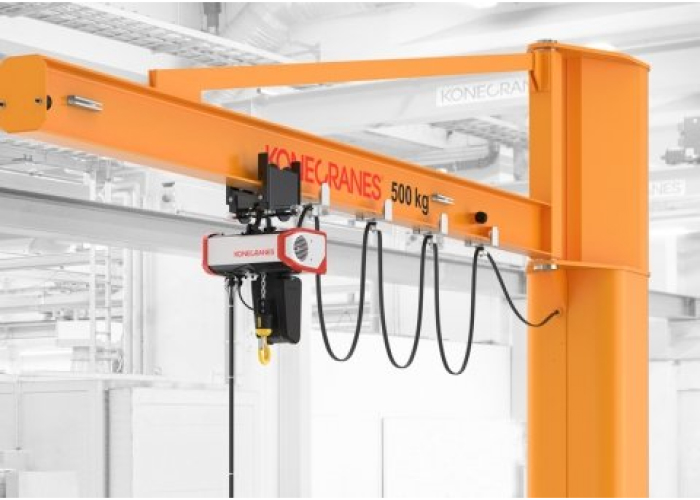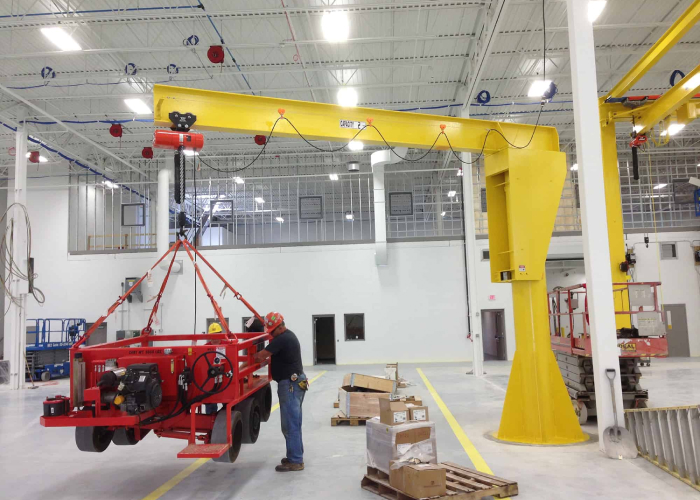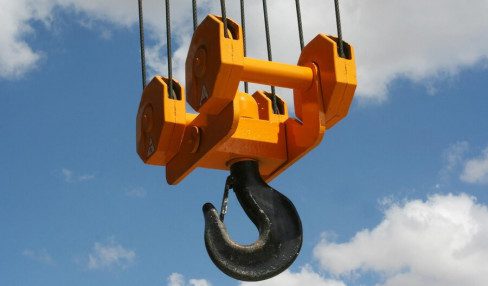How to Find the Best Jib Crane for Your Factory
5 Mins Read
Published on: 12 November 2021
Last Updated on: 10 December 2024

toc impalement
If you work in a construction company, you are building a new addition to your business, or you are using heavy machinery to complete a project, you may have heard of a jib crane before. However, if you are new to the construction industry or you are not well-versed in the heavy machinery world, this can seem like a foreign object to you,
Before you can use it for your factory job or your construction site, you need to know what this is, why it is important, and why you need one for your business. After all, why is the jib crane better than other options? Let’s find out the benefits of jib cranes, the effectiveness of jib cranes, and why they are one of the best choices for stability and flexibility for your factory!
Everything you need to know about a jib crane for your factory!

First thing first – what is a jib crane? Although you may have heard of a crane before – and you’ve probably seen one in a factory and in a construction setting – you might never have known what a jib crane is. Compared to other cranes, a jib crane is more specific and designed for certain jobs compared to all-purpose use.
However, using jib cranes is one of the best ways that you can boost the productivity, efficiency, and optimization of your business. Instead of having multiple people do the manual labor jobs with a big one crane, you can simply use jib cranes to get a job done quicker and faster than using other products.
Simply put, a jib crane is a type of lifting device that will work with lifting heavy objects. Instead of having multiple pieces of equipment, using another item, or using a forklift, using a jib crane is the best way that you can repeat a lifting task over and over again in the workplace.
Since you can use the jib crane with other equipment pieces and apparatus – such as overhead bridge cranes – you can combine the jib crane with another product to boost the efficiency of lifting items. By being compatible with other pieces, you can increase the daily productivity level of your business by avoiding any drawbacks in the factory.
Although these pieces of equipment are simple, functional, and durable, you will be surprised by how efficiently they run – and how effective they can be! Although they are simple pieces of equipment and they are fairly easy to replicate in design, you might see that they can lift upwards of around 15 tons in some cases! If you are working in a factory or construction site and need to lift heavy items, looking into various types of jib cranes is an absolute must.
Parts of the jib crane
Even though they can be durable and lift thousands of pounds, they are very simple in the way they move and their design. Even though they are simple, there are many moving parts – but rest assured, the pieces of a jib crane have less potential to fail since they contain fewer moving parts and less risk than you would find with other pieces of equipment.
- Trolley – the trolley is the part of the jib crane that carries the hoist, chain, and hook.
- Rotation – when you are using a freestanding jib crane, you can use rotation to ensure that you have a full range of motion when picking up and putting down objects.
- Pillar – the pillar, also known as the mast, is the vertical beam that helps support the weight of the apparatus and parts of the crane.
- Reach – the reach, also known as the boom, is the main part of the jib crane that is the horizontal beam.
- Electrical power – the electrical power, or the pneumatic power, of the jib crane, is used to help with rotation of the jib crane to completely swivel around when needed.
- Controls – the control of the jib crane is used to help control the device during air-powered systems. By using variable speed controls, the jib crane can alter the lifting and lowering motion of the objects.
- Hook height – the hook height of the jib crane is the setting of the height you want to lift items off of the ground.
- Rotation stop – if the crane is located close to another structure, such as a wall, ceiling, object, or piece of equipment, the rotation stop will kick into motion and stop the jib crane before it hits anything in its way.
Different types of jib cranes

Along with knowing the parts of a jib crane, you need to know the different types of jib cranes that you can purchase for your construction site or factory.
- Freestanding – one of the main types of jib crane systems that you can use is a freestanding crane. The freestanding jib crane is the most popular and is frequently used in various environments, such as indoor factories and outdoor construction sites. You can use a freestanding jib crane to carry up to 15 tons and provide a full range of motion.
- Base-plate – the first type of free-standing jib crane is a base-plate; this is the easiest to use and the most frequently used in all industries.
- Foundation – the second type of freestanding jib crane is a foundation crane that uses a steel plate as the anchor.
- Foundationless – the next type of jib crane that you can use is a foundationless jib crane that doesn’t need any type of foundation and can be used in various locations. The purpose of this foundationless jib crane is that it can carry up to 1,000 pounds and it is more portable than other options.
- Wall-mounted – the last type of jib crane that is frequently used is a wall-mounted jib crane. The wall-mounted jib crane is used along walls and can be used very close to low ceiling heights.
Conclusion
Are you considering using a jib crane for your construction business or your factory? If so, you will have to choose between a freestanding jib crane, foundationless jib crane, or wall-mounted jib crane to work for our special needs! Instead of using manpower to finish jobs, use jib cranes to efficiently lift and lower heavy objects to speed up the productivity of your business.
Read Also:


















Comments Are Closed For This Article